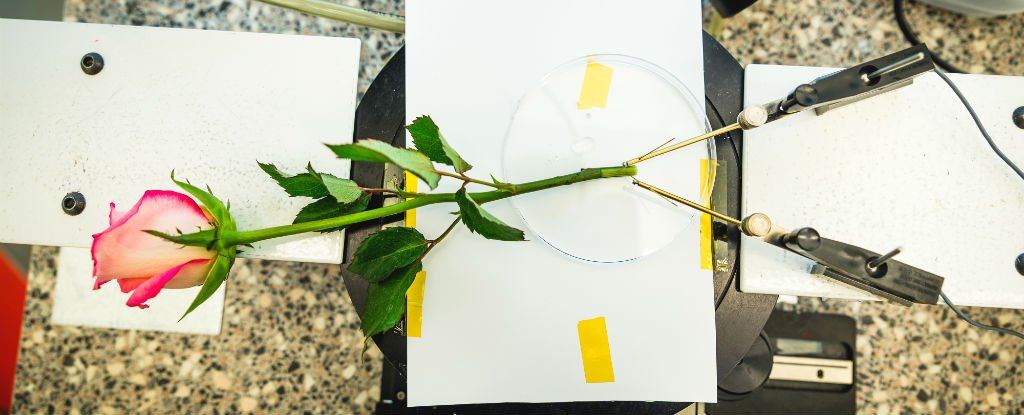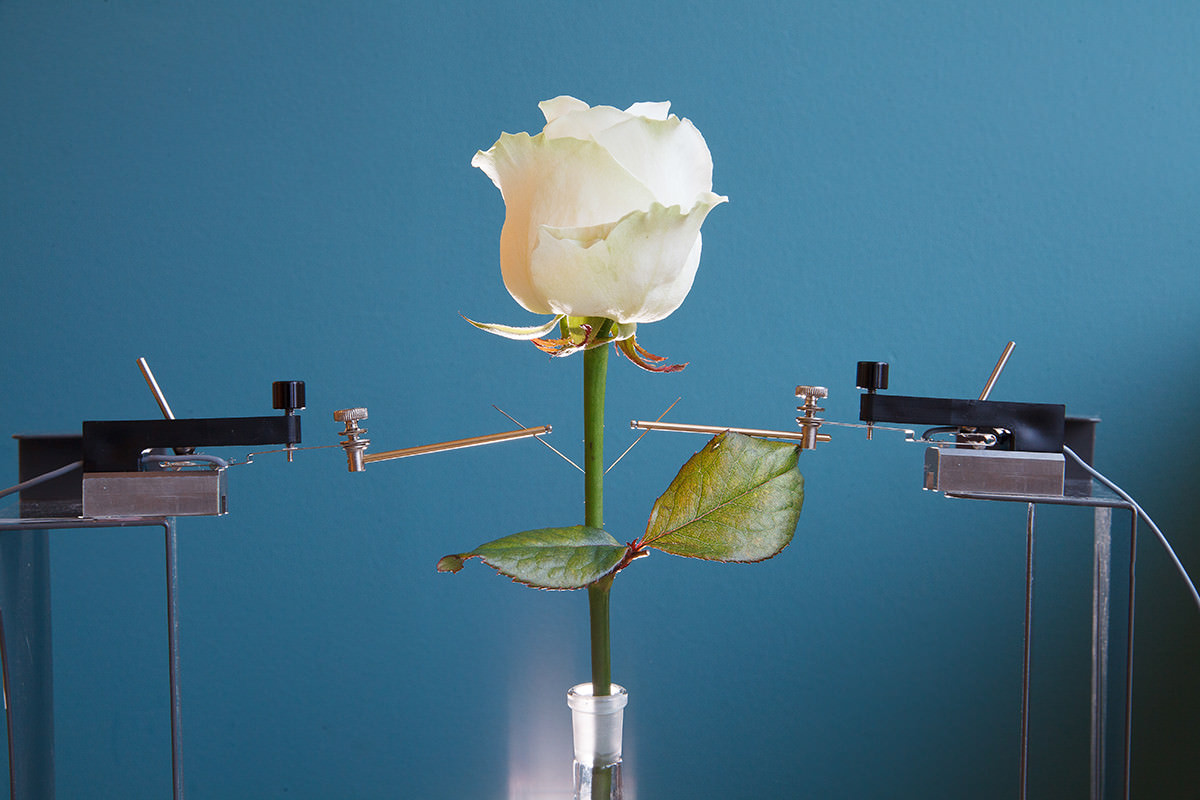
The future is going to be ridiculous.
Scientists have figured out how to inject a conducting solution into a rose cutting, and have it spontaneously form wires throughout its stem, leaves, and petals to create fully functioning supercapacitors for energy storage.
The so-called e-Plant was able to be charged hundreds of times without any loss on the performance, and the team behind the invention says it could allow us to one day create fuel cells or autonomous energy systems inside living plants.
“A few years ago, we demonstrated that it is possible to create electronic plants, ‘power plants’, but we have now shown that the research has practical applications,” says one of the team, Magnus Berggren from Linköping University in Sweden.
“We have not only shown that energy storage is possible, but also that we can deliver systems with excellent performance.”
Back in 2015, the team produced their first cyborg rose by filling its veins with a conductive polymer solution, and having it weave the material into its living tissue.
As Aviva Rutkin reported for New Scientist at the time, this ended up being a whole lot more difficult than it sounds, because they had to find a material that had decent conductivity, wasn’t toxic to the plant, and didn’t clog or fail to stick to the inner surface of its veins, known as xylem.
They finally found a solution that worked – PEDOT, or poly(3,4-ethylenedioxythiophene) – and soaked a regular garden rose cutting in it.
Within just two days, they found that the conducting polymer had been absorbed into its network of veins, and when they removed the outer tissue of the base of the stem, they found actual polymer wires running through the rose’s internet xylem network.
By placing gold electrodes and probes on the ends and in the middle of the rose cutting, the team created a fully functional transistor. They connected it to an external resistor and successfully ran a current through it:

Berggren described to New Scientist the moment when one of his team, Eleni Stavrinidou, demonstrated the final result.
“When Eleni showed me these beautiful microscope pictures, we understood immediately: we could make circuits out of this,” he said. “The performance, the shape of the wires, were just outstanding, unbelievable.”
Fast-forward to today, and the researchers have taken things one step further.
They’ve managed to tweak the polymer solution so that it spreads autonomously throughout the entire plant – including the leaves and petals – not just localised regions of the stem in the previous experiment.
Not only did the new gel, called ETE-S, disperse throughout the entire vascular tissue of the cutting, but when it solidified into wires, they had two orders of magnitude greater conductivity than those in the previous e-Plants, and retained the high level of conductivity over several centimetres of the plant.
When they peered inside the rose tissue, the researchers found that the polymer solution had permeated its vascular walls to sit between the cell wall and plasma membrane.
This allowed them to turn the network of wires into a fully functioning electronic device by placing several supercapacitors – powerful components used in many different kinds of electronics to store large amounts of electrical energy – along the stem.
For this, the team used the wires as the electrodes, and the plant tissue between them as the electrolyte separator – a permeable membrane that physically separates the electrodes to prevent a short circuit.
They were able to run the e-Plant through repeated charge cycles without losing any efficiency.
“We have been able to charge the rose repeatedly, for hundreds of times without any loss on the performance of the device,” Stavrinidou says in a press statement.
“The levels of energy storage we have achieved are of the same order of magnitude as those in [traditional] supercapacitors. The plant can, without any form of optimisation of the system, potentially power our ion pump, for example, and various types of sensors.”
The next step for the researchers is to make the technique work in a living rose – not just a cutting – so that the possibility of growing primitive electronic systems inside forest vegetation or fields of vegetables to harvest energy could actually be realised.
It’s a fantastic or dystopian view of the future, depending on how you look at it, but this e-Plant just got us one step closer.
As computer scientist Andrew Adamatzky, who’s been applying voltage to lettuce seedlings at Bristol Robotics Laboratory in the UK, told New Scientist in 2015, “In the very distant future – neither ourselves nor our kids will see this – we can grow vegetable computers in our gardens.”
The research has been published in Proceedings of the National Academy of Sciences.
https://thecontrail.com/forum/topics/cyborg-rose-grows-functioning-electronic-circulatory-inside-its-s







